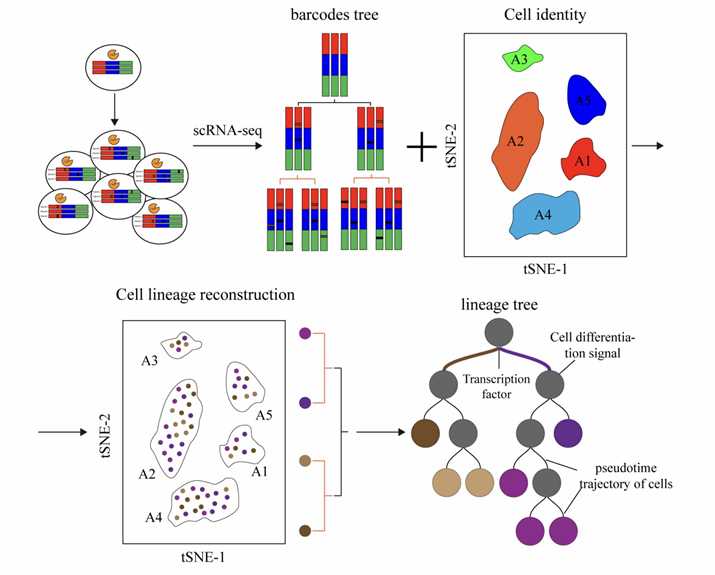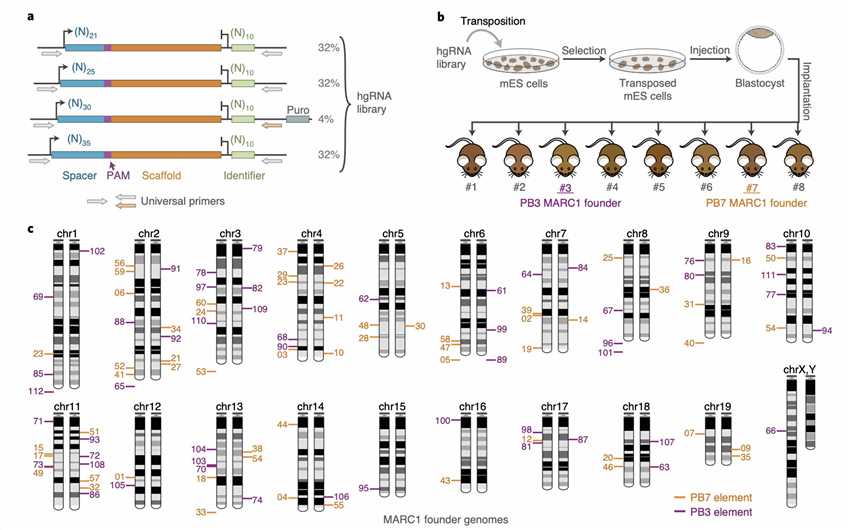CRISPR/Cas9 and Cre-loxp Barcode Lineage Tracing Service
To assist researchers in gaining a deeper understanding of human oncology mechanisms, as well as evaluating the efficacy of potential tumor drug therapeutics, Creative Biolabs offers CRISPR/Cas9 and Cre-loxp barcode lineage tracing services for cancer prevention and diagnosis analysis.
Introduction to CRISPR/Cre-loxp-Based Lineage Tracing
Cancer cells can evolve to be drug-resistant, more aggressive, and metastatic, and spread to other parts of the body to form new tumors. Therefore, understanding the process of cancer cell fate has always been a difficult issue in cancer prevention and diagnosis.
In the past few decades, Creative Biolabs has generated a new system to track cancer cells across generations to further analyze their evolutionary history. Our CRISPR/Cre-loxp-based approach to lineage tracing can embed heritable and evolutional DNA barcodes for each tumor cell. Every time a cell divides, its barcode is slightly modified. When our staff finally harvests the offspring of the original cells, they can then compare the barcodes of the cells to reconstruct the "family tree" of each cell, similar to the construction of the evolutionary tree.
Up to now, this novel CRISPR/Cre-loxp-based lineage tracing technology can provide much useful information for the study and prevention of cancer metastasis and spread, such as the time/sequence of gene mutations during malignant transformation, the adaptation of tumor cells to different tumor microenvironments, or the source/mechanism of drug resistance acquired by tumor cells.
 Fig.1 CRISPR-Based Lineage Tracing.1
Fig.1 CRISPR-Based Lineage Tracing.1
CRISPR/Cas and DNA Barcodes Lineage Tracing Platform
Recently, we have used CRISPR/ Cas9 to add different biological barcodes to a large number of tumor cells, enabling rapid lineage tracing analysis by specifically labeling different cells and their progeny. In our labs, 5-15 sgRNA recognition site sequences are generally inserted into the tumor cell genome, each recognition site is separated by 3-5 bp bases, and Cas9 can cut these 5-15 relatively independent sites in different ways to achieve cell labeling. Moreover, we have designed a novel biological barcode sequence with 5-8 overlapping sgRNA recognition sites to label different tumor cells, which can efficiently and stably label a large number of cells.
Nowadays, Our CRISPR/Cre-loxp and DNA barcode platform can provide thousands of detection markers to a large number of tumor cells. In addition, it plays an important role in the study of cancer cell sources, cancer cell migration, cancer development, and recurrence processes.
 Fig. 2 Strategy to Generate Mice With Multiple hgRNA Integrations.2
Fig. 2 Strategy to Generate Mice With Multiple hgRNA Integrations.2
Service Procedure
-
CBL barcode sequence design
-
Barcode CB1/CB2 plasmid construction
-
Stable barcode cell line establishment
-
Cas9 cutting validation of barcode sequence
-
Cre-mediated tumor cell-specific labeling
-
Detection and data analysis
Customize CRISPR/Cas9 Barcoding Mouse Models
In recent studies, we utilized CRISPR/Cas9 to introduce mutagenic synthetic DNA sequences as tumor cell barcodes, which were then injected into mice and induced metastasis. As the cancer progressed and spread throughout the host mice, the cell barcodes underwent random "editing" by CRISPR/Cas9. By sequencing these cells based on their degree of metastasis, we were able to correlate tumor behavioral differences with gene expression change patterns. These models can be also used for tracking the distribution of tumor cells to determine if certain lineages have a higher propensity for metastasis than others.
-
Mature CRISPR/Cre-loxp barcoding development system
-
Experienced design and solutions to lineage tracing
-
Efficient and time-saving discovery system
-
High-cost performance
-
Authoritative certification reports
Creative Biolabs provides comprehensive CRISPR/Cre-loxp barcoding lineage tracing services. Our professional team and advanced technologies ensure high-quality experimental results. We provide excellent support to our clients through customized solutions, accurate data analysis, and reports. If you are seeking a reliable partner to advance your research and drug development, please contact us immediately for outstanding services.
References
-
Yao, M.; et al. A new generation of lineage tracing dynamically records cell fate choices. International Journal of Molecular Sciences, 2022, 23(9): 5021.
-
Leeper, K.; et al. Lineage barcoding in mice with homing CRISPR. Nature Protocols, 2021, 16(4): 2088-2108.
For Research Use Only | Not For Clinical Use


 Fig.1 CRISPR-Based Lineage Tracing.1
Fig.1 CRISPR-Based Lineage Tracing.1
 Fig. 2 Strategy to Generate Mice With Multiple hgRNA Integrations.2
Fig. 2 Strategy to Generate Mice With Multiple hgRNA Integrations.2
 Download our brochure
Download our brochure